Apr
1
Interesting Places: Alang, India
Alang is where ships of all sizes and nationalities go to die.
Located on the western coast of India, the great differences in shoreline between low and high tides allow ships to easily beach themselves where they are then disassembled on the spot. Dozens of ships are broken up here every year, and tens of thousands of workers flock here to earn a living in what could best be described as a free-for-all involving hand labor, blowtorches, and hammers.
It’s not easy work. Aside from the relatively low pay (by the civilized world’s standards), there are many hazards on the job. You could get crushed by falling steel components from other workers too hastily blowtorching beams above you. You could get cut up by exposed steel (metal versus flesh… metal usually wins). You could weld your way through what you thought was a bulkhead but actually was filled with fuel vapors (boom!). You could inhale too much asbestos (from older ships) and we all know what happens with that. I could go on, but frankly it’s pretty clear that there are all sorts of physical, chemical, and biological hazards from this sort of work. Health insurance for the workers? Fuggedaboudit! You’re lucky enough to have a place to sleep in the shantytown when your shift is done.
On the flip side of the gruesome human toll being inflicted from daily grind, the amount of recycled materials that are accumulated and resold by the breakers at Alang are truly staggering. Aside from the millions of tons of steel that are reclaimed every year, there is a vast amount of copper wire, brass, electronic components, wood, aluminum – basically all of the things that would be on a ship that was paid off to the shipyard. It also must be stated that the alternative of not having a job versus the chance to strike a better life for your family is part of the allure of working here.
Is it all worth it in the name of recycling? And who really profits from all of this? That’s for you to decide. For now, behold the spectacle that is Alang.
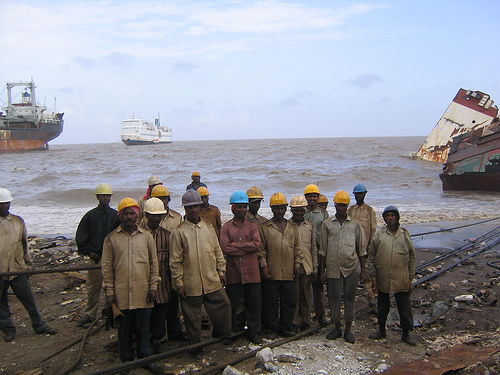
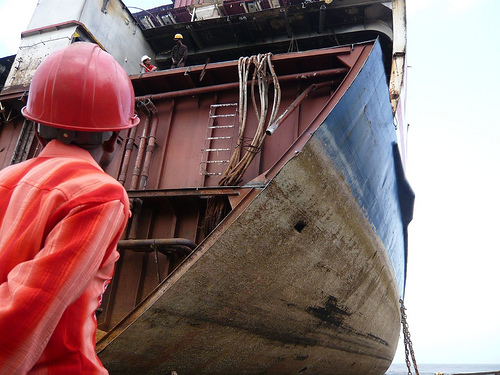
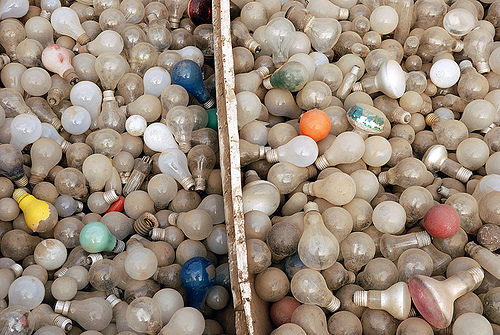
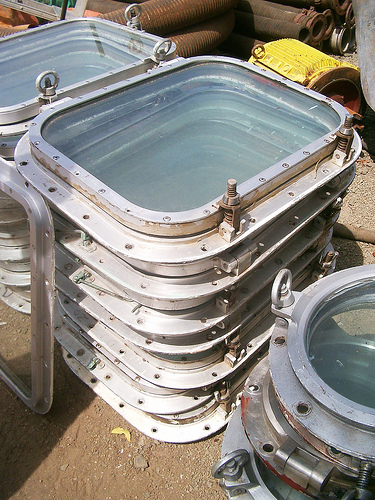
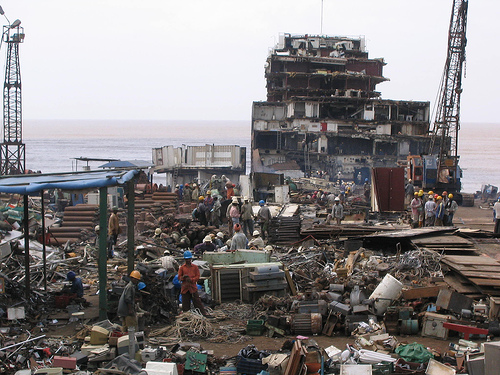
very impressive…i wish you could send me more pictures of people there at alang…! i am just too curious to know what really it looks like…
cheers
scv
shwetabh
28 Apr 09 at 11:28 pm
Hi
Planning to visit this fascinating place myself in the coming months but all internet sites I have visited claim the place is closed to visitors. Can anybody advise on how to get into the yards.
Thanks James
james wharton
11 Jul 09 at 4:27 am
Alang is generally off-limits to anyone except those who have successfully applied for a visitor’s permit from the Gujarat Maritime Board. For foreign nationals you can bet that this involves a drawn-out application process that will invariably involve the host nation’s embassy, and other red tape.
I have not been there personally, but this sort of thing is typical of local maritime agencies, and you can bet that photography or video are prohibited. For example, to be a non US citizen, caught at Newport News shipyard in the USA snapping pictures of the newest nuclear powered aircraft carrier under construction would probably get you in some sort of hot water.
However quite a bit of media makes its way out of Alang so you can also infer that there is either bribery or covert media capture going on. Taking pictures of the shipyard in the best possible light (smiling, enthusiastic workers, no snapshots of unsafe work practices) will probably help as well- if you get caught.
Tijger Tsou
13 Jul 09 at 8:42 am